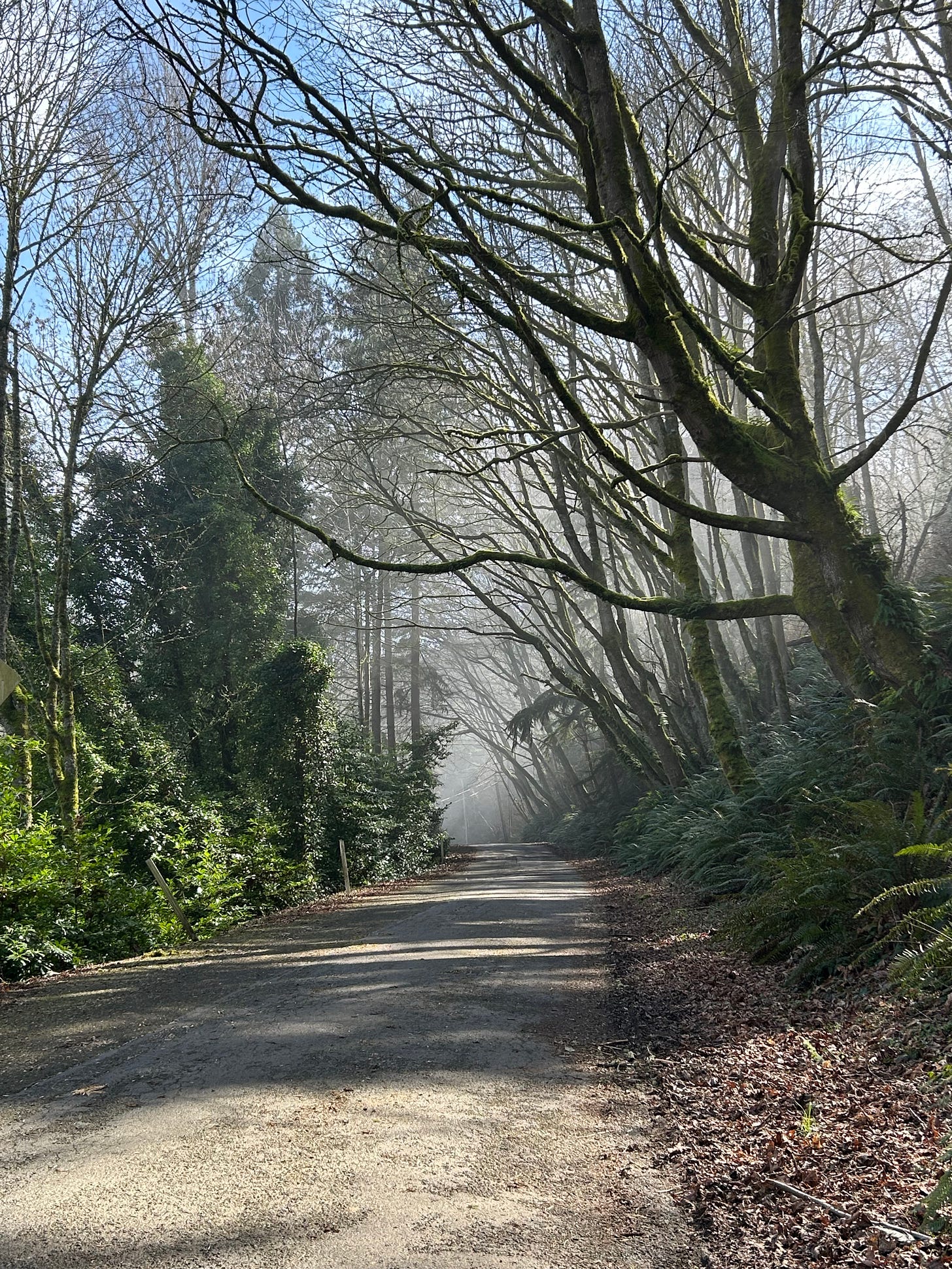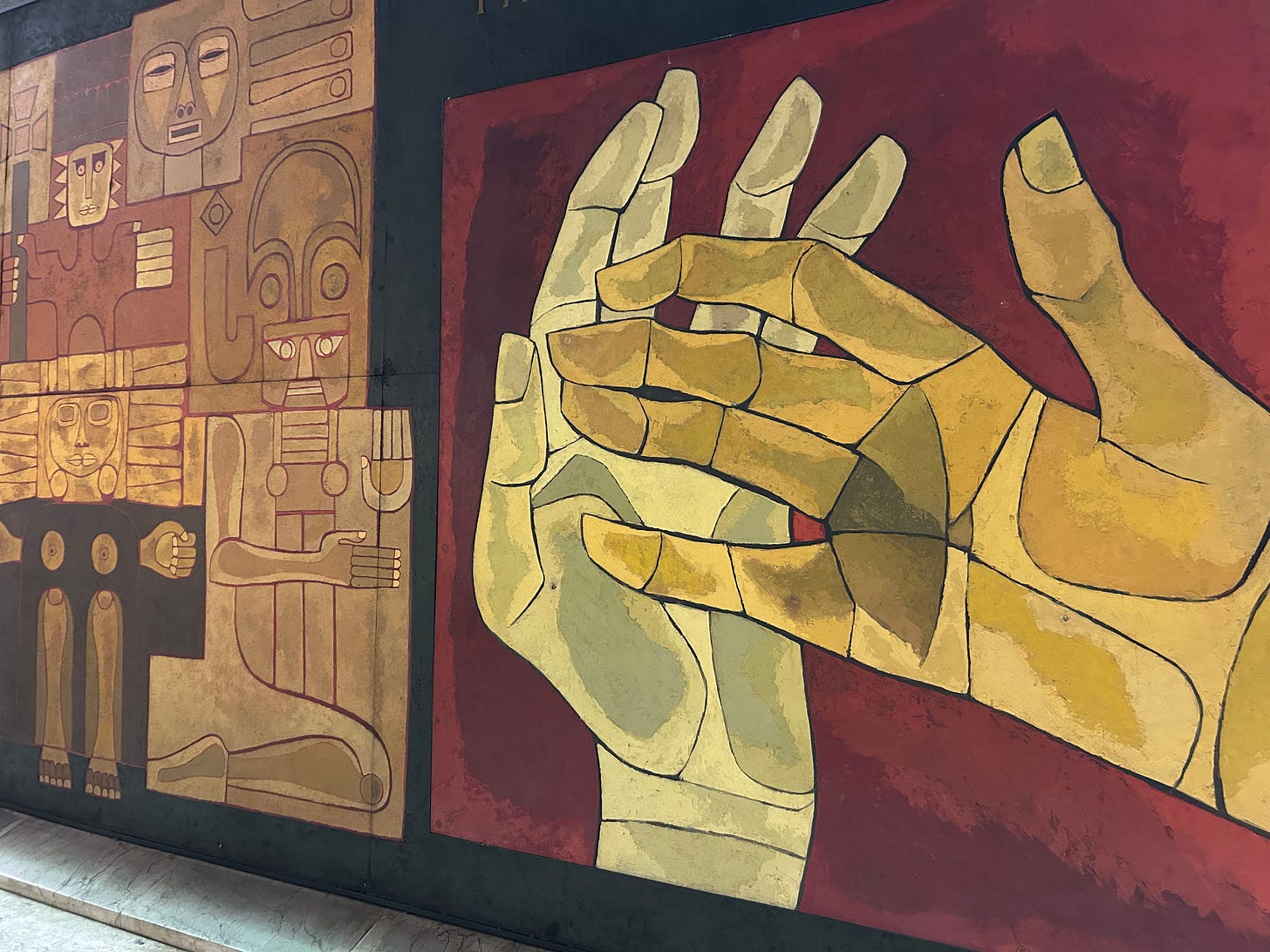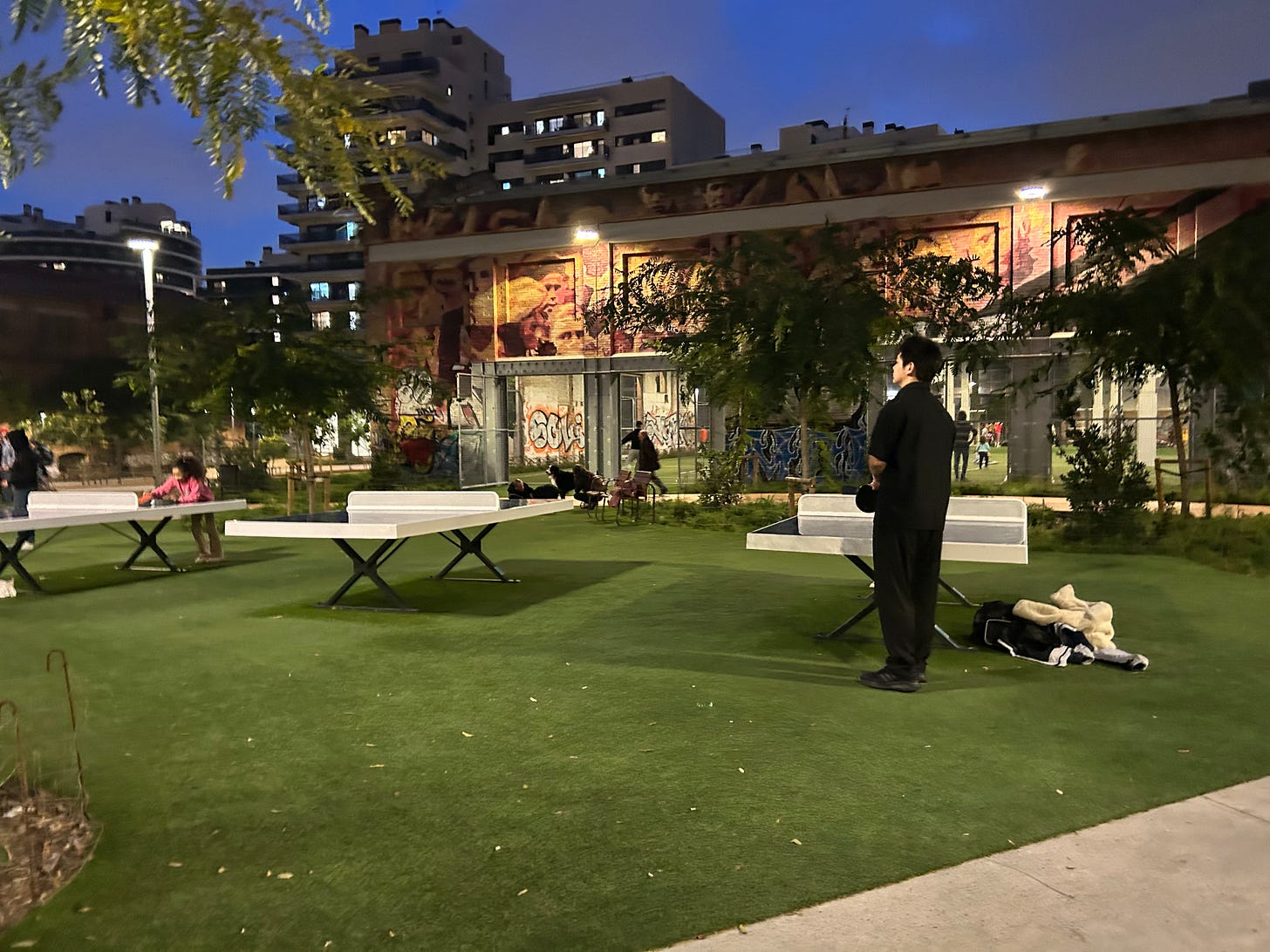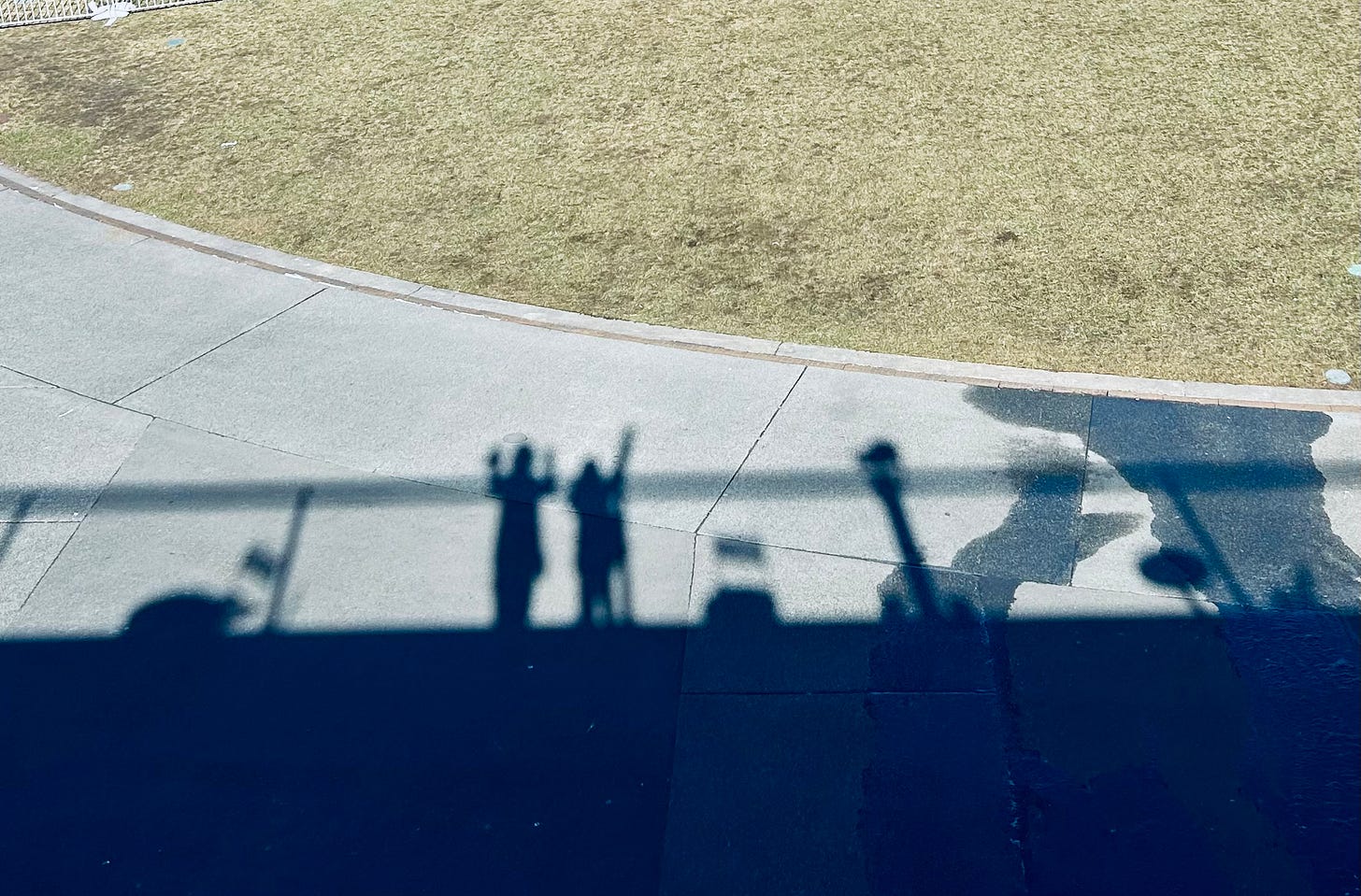Storms, Shutdowns & Showing Up for Each Other
How moments of disruption reveal the strength of our communities—and what comes next
It’s been a while since I last wrote here. Not for lack of thoughts—there are plenty—but because I haven’t known where to start.
Current events paired with a month in motion has a me a bit upside down: an international trip for work and writing, a week of solo parenting two under five, multiple rounds of winter sickness (this winter continues), and exploring career opportunities in a precarious climate adaptation field. Budget cuts, staffing reductions, entire programs disappearing. The landscape shifting beneath our feet.
Community Resilience in Real Time
I just returned from a writing workshop at the International University of Catalunya, where I spent days in deep conversation with scholars and practitioners working on climate adaptation and resilience. We shared case studies, asked big questions: What enables communities to come together in the face of crisis? What gets in the way?
We talked about participatory mapping, nature-based solutions, governance barriers, and the necessity of radical collaboration. We debated the role of public space in resilience and discussed how to decolonize participatory processes. Then, after all that—after days spent dissecting these ideas in an academic setting—I came home to my small island in the Pacific Northwest, where community resilience played out in real time.
Three days after returning, at 3:30 AM, we lost power.

Winds knocked down trees. Roads were blocked. Schools closed. Some homes were damaged. Luckily, no one was badly hurt, but the disruption was significant—no heat, no running water, no way to care for those who need it.
Yet what stood out most wasn’t the damage. It was the response.
By morning, neighbors were out clearing roads with tractors and chainsaws. People checked in on one another, bringing food to those still without power, offering warm places to stay. This is resilience—not just in theory, not in a policy brief, but in the small, tangible ways people show up for each other. In the form of group chats, radio shows, social media groups, and neighborly support.
I was relatively prepared—not because of an emergency alert, but because of a casual note from a local radio host:
“Tuning in for another two hours of commercial-free radio. Stay warm out there, and make sure you’ve got those flashlights nearby—it’s gonna be a windy one.”
That simple message—a passing comment on a local station—was what made me grab my headlamp and extra blankets before bed. A reminder that community resilience isn’t just about infrastructure and funding. It’s about connection. Information. A web of relationships and resources that strengthen each other.

The Work Ahead: Building Community Resilience Beyond Crisis
There’s a reason I keep coming back to this idea of a web. In nature, a web’s strength doesn’t come from any one strand, but from its multiple points of connection. When one part breaks, the others hold. What if we thought about community resilience like that?
For too long, resilience has been framed as a response to crisis—something we scramble to build in the face of disaster, rather than something that is embedded in our everyday lives. But resilience isn’t just about recovery. It’s about relationships. It’s about infrastructure that holds us in times of crisis and in times of calm. It’s about making sure that when one strand frays, the whole web doesn’t collapse.
So what does that look like in practice?
Investing in Local Capacity: The strongest forms of resilience don’t come from outside interventions; they come from within communities. That means shifting resources to locally led initiatives, supporting grassroots networks, and ensuring that adaptation efforts are co-created rather than imposed.
Decoupling Resilience from Policy Cycles: Federal funding is fickle, and political priorities shift. To build resilience that lasts, we need to embed it in economic models, social networks, and cultural practices—things that persist beyond election cycles. This could mean cooperative land trusts that secure housing, mutual aid networks that redistribute resources, or community-led energy projects that provide stability amid uncertainty.
Designing Spaces for Connection: Resilience isn’t just about infrastructure—it’s also about relationships. The physical spaces we create shape the social fabric of our communities. How do we design neighborhoods that foster collaboration and trust? How do we create gathering places that are not just emergency shelters, but centers of daily life, where people form the bonds that make them stronger in the face of disruption?
Centering Joy and Collective Care: Too often, resilience is framed as endurance—gritting our teeth and getting through. But true resilience is about more than just surviving. It’s about making space for joy, for art, for culture, for practices that make life meaningful. Community gardens, storytelling projects, music f estivals—these are not distractions from resilience work; they are its foundation.

As climate funding dries up and programs are cut, we have a choice. We can keep relying on top-down solutions that come and go with policy shifts. Or we can start weaving something stronger—something that holds not just in times of crisis, but every day. Something that allows communities not just to withstand, but to thrive.
This is the work ahead. The question is: how do we begin? I want to hear from you. What does community resilience look like where you live? Have you seen spaces that serve this role—explicitly or implicitly? What makes them work?
Here’s to rebuilding. To finding new beginnings, even in uncertain times.
Until next time.


